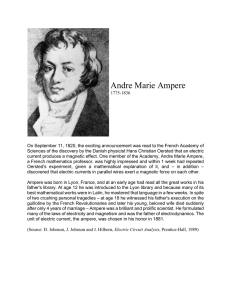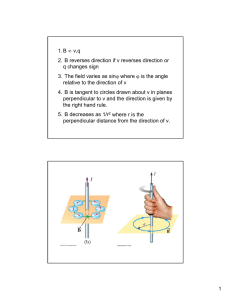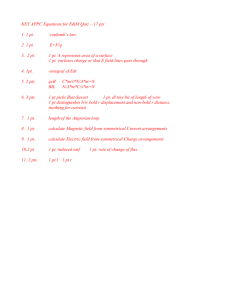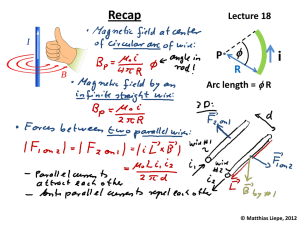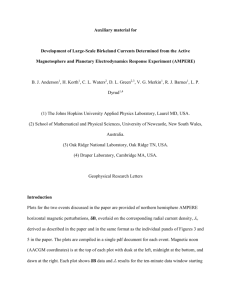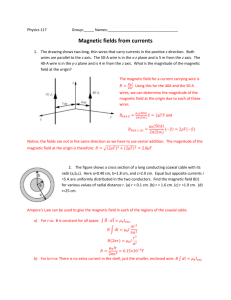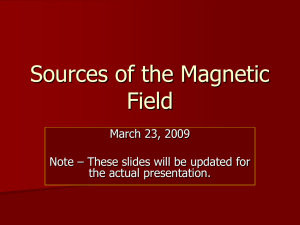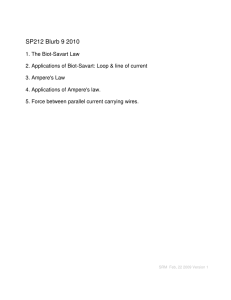Lecture #18 04/05/05
advertisement
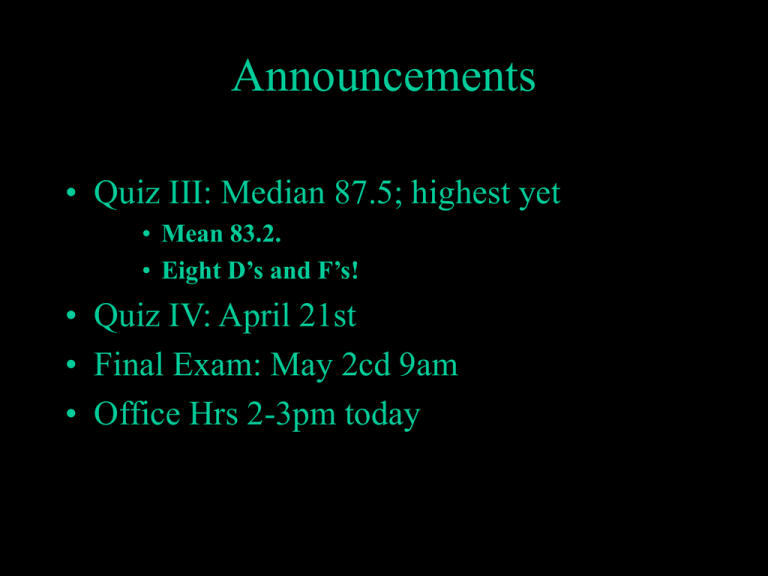
Announcements • Quiz III: Median 87.5; highest yet • Mean 83.2. • Eight D’s and F’s! • Quiz IV: April 21st • Final Exam: May 2cd 9am • Office Hrs 2-3pm today Magnetic field from wires I2 0 I ds rˆ B 2 4 r I1 In between one must add the fields from each wire, with the correct direction vector . Magnetic Field Integrated around a wire Current I out of the plane •What is the integral of the magnetic field around wire on the path drawn? 0 I 2 a 0 I B ds 2 a B ds I 0 Ampere’s Law B ds I I 0 •Ampere’s law says that if we take the dot product of the field and the length element and sum up (i.e. integrate) over a closed loop, the result is proportional to the current through the surface •This is not quite the same as gauss’s law (ch32 for magnetism) Ampere’s Law:Symmetry B ds I 0 •Ampere’s law because easy (just as gauss’s law did) when we have symmetry and a uniform field •From a infinitely long wire: Radial symmetric, so B(2r)=0I (same expression as from Biot-Savart law) Quiz: Ampere’s Law •Consider three wires with current flowing in/out as shown •Consider three different loops surrounding the wires X Y Which of the loops has the largest and smallest integrals of the magnetic field around the loops drawn? A) X > Y > Z C) Y > Z > X B) X > Z > Y D) Y > X > Z 2A 3A 1A Z Ampere’s Law: Wire •We can use ampere’s law on problems difficult to solve with the Biot-Savart law We know that the current is uniformly distributed within the wire, so Ienc=I(r2)/(R2) B(2r)=0I(r2)/(R2) B=0I(r)/(2R2) Inside the field is proportional to the distance from the center Outside the field falls over off Magnetic Field From a Plane of Current What is the magnetic field? •By symmetry, magnetic field will be the same on both sides L •Draw a loop crossing the boundary to use Ampere’s Law N wires in length L B ds I NI B ds BL BL 0 0 0 l 0 B 0 NI 2L Current I in each wire Magnetic Field of an Ideal Solenoid length l N turns Length L •If the length is much greater than the radius, •Magnetic field far away is zero •Magnetic field everywhere outside is small •Draw a path for Ampere’s law that crosses inside the solenoid B ds I 0 l R Current I l I l NI L =Bl B 0 NI L Toroid •Take a solenoid and bend into a torus •Again we have symmetry! B(2r)=0IN •We do not have a constant B field!
